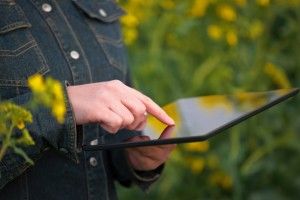This post was originally published on European Commision’s Digital Single Market Blog
The AIOTI WG06’s report, Smart Farming and Food Safety Internet of Things (IoT) Applications – Challenges for Large Scale Implementations makes for a good step in the right direction towards the creation of a vibrant IoT ecosystem full of opportunities and benefits for Europe. A wide variety of stakeholders has actively contributed to our report: experts representing farming cooperatives, associations of manufacturers, agri-food research centres, small businesses with IoT solutions for the farming sector, large corporations, and of course ICT companies as providers of IoT technologies and services (which are at the core of the Alliance for Internet of Things Innovation (AIOTI) initiative). Coming from eleven European countries, US, and China, the contributing experts have provided insights into a manifold of dimensions that are relevant for medium-term market deployment, such as economic conditions, technical feasibility, farmer adoption, industrial value for key players, consumers and society expectations, and scalability of the solutions, to name just a few.
With about 4
First and foremost, new IoT solutions (e.g. those enabling fine-grained collection of data or transmitting information in real time from the field to the farmer) must prove their added value to the users: the data collected in smart farming applications must be actionable and provide support in decision-making, not only to the farmer but to all stakeholders along the whole value chain.
On the technology side, connectivity and interoperability are the key issues. IoT has the potential to pave the way to disruptive innovation in farming not only through technology, but also by enabling the emergence of new business models. This includes devising new models for exploiting the data in ways yet unexplored, taking into account transversal issues such as ownership, sharing, privacy and security. A revamped data-centric food chain is coming our way.
Last but not least, IoT-based smart farming applications should target not only the large, conventional farming exploitations. Whereas large farms can reap significant benefits from IoT, they can also act as levers to support the adoption of such solutions by smaller farms – which are more common in Europe – as well as in other growing trends in agricultural exploitations, such as organic farming. This could lead to fostering a very respectful and transparent farming for the European consumers and society.
Engagement of the agri-food sector and IoT providers will be important for the success of the AIOTI and the creation of a fruitful IoT European ecosystem around farming and food safety.
As AIOTI WG06’s chair, therefore, I am convinced that digital technologies, and IoT in particular, have a great potential to help the European agri-food sector face significant challenges such as profitability, environmental footprint and sustainability. This will add real value to the actors within the plant and animal products life cycle, from farm to fork. This will come at a great extent through more efficient, near-real-time monitoring and analysis enabling better decision making and actuation, not only at the production stages, but (and this is where lots of value lies) throughout the whole value chain. By leveraging data-driven transparency and cooperation across the agri-food value chain, we can achieve a more dynamic, responsive and efficient food production network, and help food industries produce healthier and safer food products, of the highest possible quality.
The Large Scale Pilot to be funded under H2020 will be for sure a great opportunity to explore joint solutions to the above challenges and provide valuable answers and evidence in a well-coordinated manner. Global cooperation is the key to success and AIOTI must keep up the pace.
Executive Director of Gradiant and Chair of AIOTI working group on Smart farming and food security



